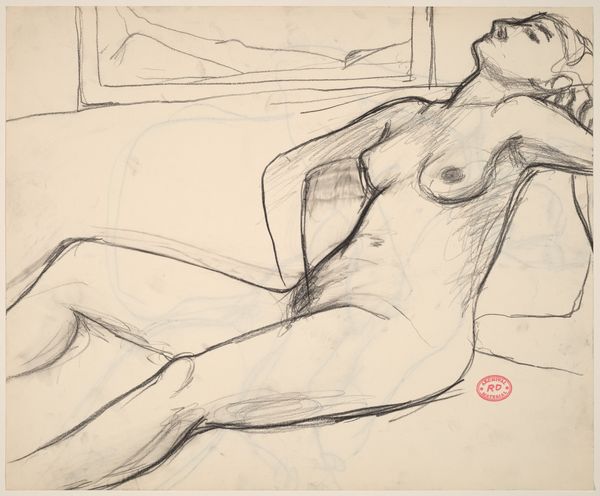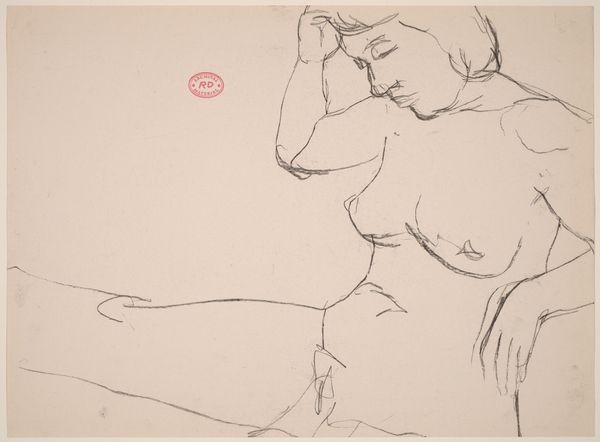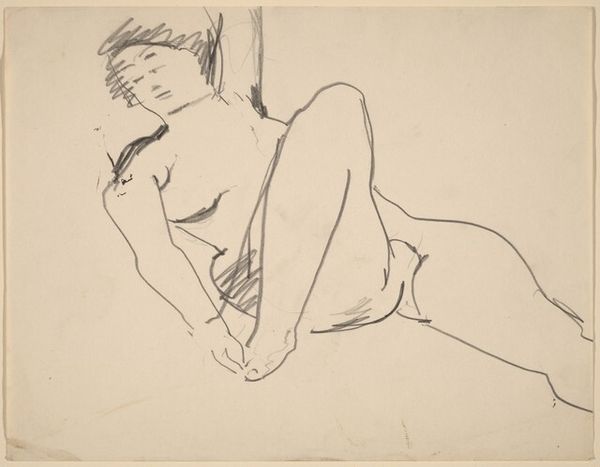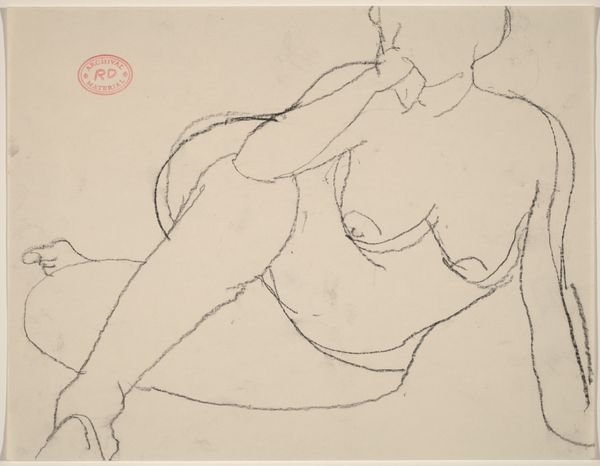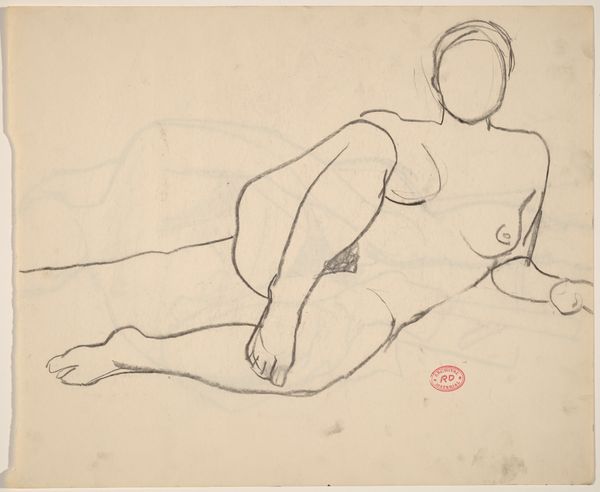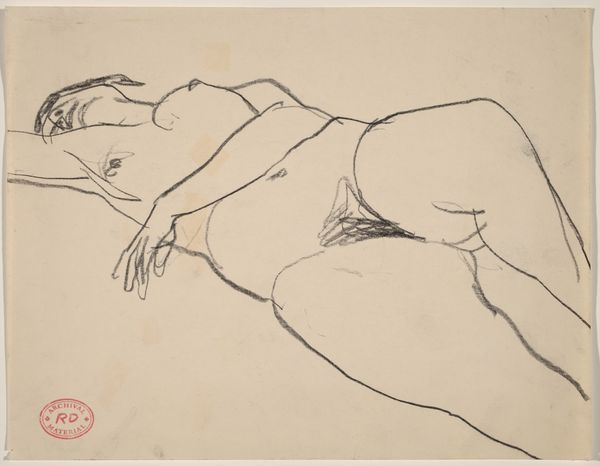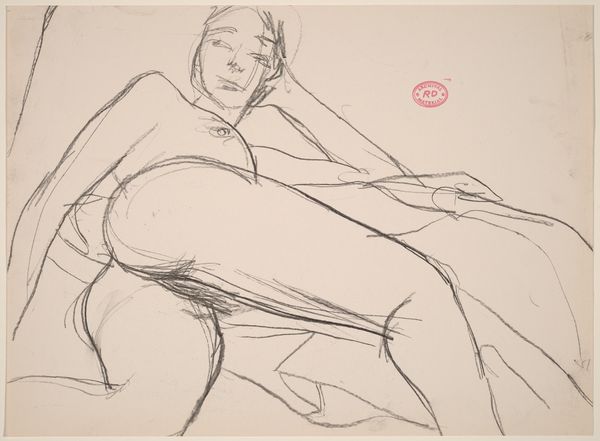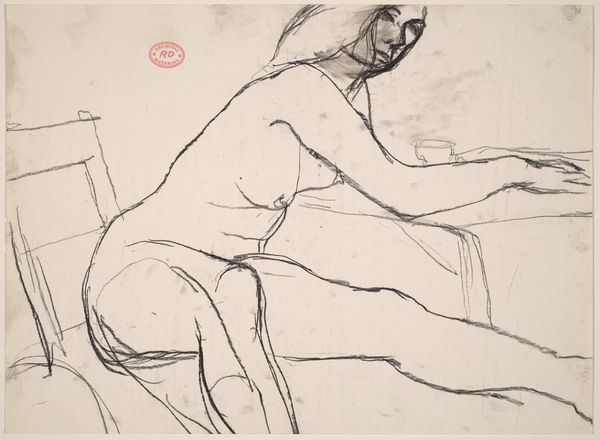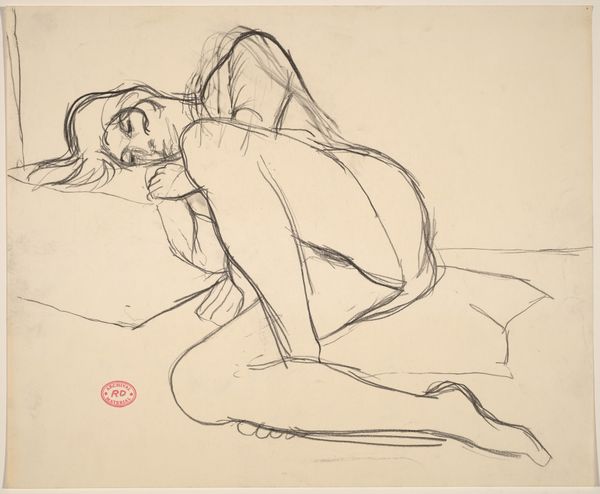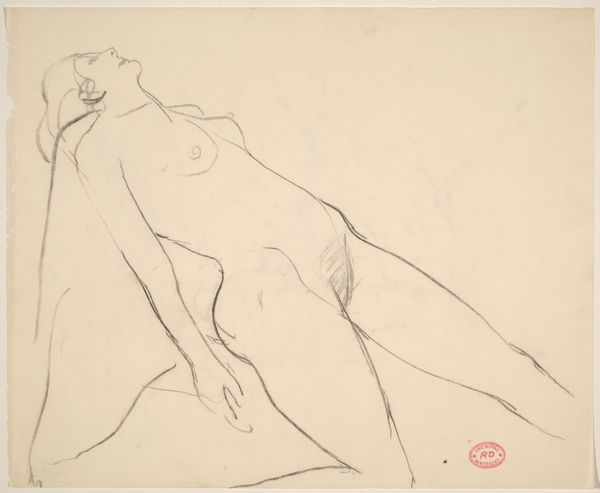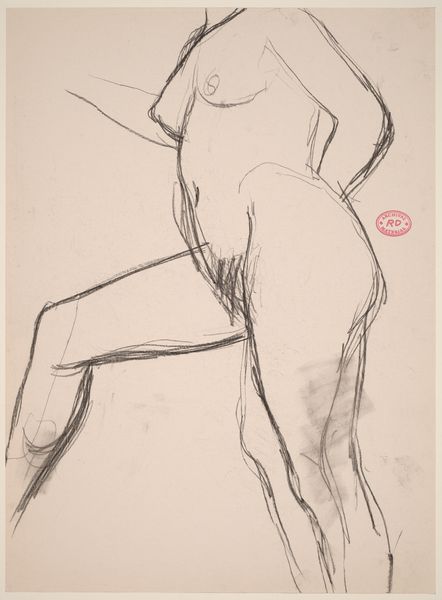![Untitled [reclining female nude in slippers] by Richard Diebenkorn](/_next/image?url=https%3A%2F%2Fd2w8kbdekdi1gv.cloudfront.net%2FeyJidWNrZXQiOiAiYXJ0ZXJhLWltYWdlcy1idWNrZXQiLCAia2V5IjogImFydHdvcmtzLzEyZDQyOTIxLWEzMjQtNGZiMi1hN2ZjLTllMjc2N2JiYjM0Mi8xMmQ0MjkyMS1hMzI0LTRmYjItYTdmYy05ZTI3NjdiYmIzNDJfZnVsbC5qcGciLCAiZWRpdHMiOiB7InJlc2l6ZSI6IHsid2lkdGgiOiAxOTIwLCAiaGVpZ2h0IjogMTkyMCwgImZpdCI6ICJpbnNpZGUifX19&w=3840&q=75)
drawing, pencil
#
drawing
#
figuration
#
bay-area-figurative-movement
#
pencil
#
nude
#
realism
Dimensions: overall: 35.6 x 43.2 cm (14 x 17 in.)
Copyright: National Gallery of Art: CC0 1.0
Editor: Here we have Richard Diebenkorn's "Untitled [reclining female nude in slippers]," a pencil drawing created sometime between 1955 and 1967. The linework is so raw and immediate; you can almost feel the artist's hand moving across the page. What stands out to you about this piece? Curator: It's crucial to consider Diebenkorn’s material choices. Why pencil? It suggests accessibility and immediacy, a democratic medium available for sketching and study. This wasn’t intended, perhaps, as a high art "statement," but more of an exploration, even a rehearsal. How does that affect our perception of the subject, the female nude? Editor: Interesting, so it shifts our focus from idealized beauty to…what exactly? Curator: To labor, to the means of representation itself. Consider also that period: post-war America, shifting gender roles. This raw depiction of a nude body sidesteps traditional objectification. We're seeing the evidence of the artist's work, the pencil strokes, and the human form rendered not as a distant ideal, but as something encountered, worked through, even struggled with. It's about the physical act of seeing and representing. What kind of paper was he using, do we know? Editor: I am unsure about the paper type; let me check. But thinking about labor, I see now that even the unfinished quality reinforces this sense of process. It makes me consider all of the material conditions and the time it took to create it. Curator: Precisely. Even the "unskilled" lines contribute meaning; this isn't a classical sculpture but an exercise in seeing and making. It reminds us that art is a product of labor, material choices, and social context. Editor: This completely changes how I see this kind of work! I was initially focused on the figure itself, but now I’m considering the entire process, materials and how Diebenkorn chose this method for representing women during his time. Thank you. Curator: Indeed. Art is, after all, as much about its making as it is about its ostensible subject.
Comments
No comments
Be the first to comment and join the conversation on the ultimate creative platform.
